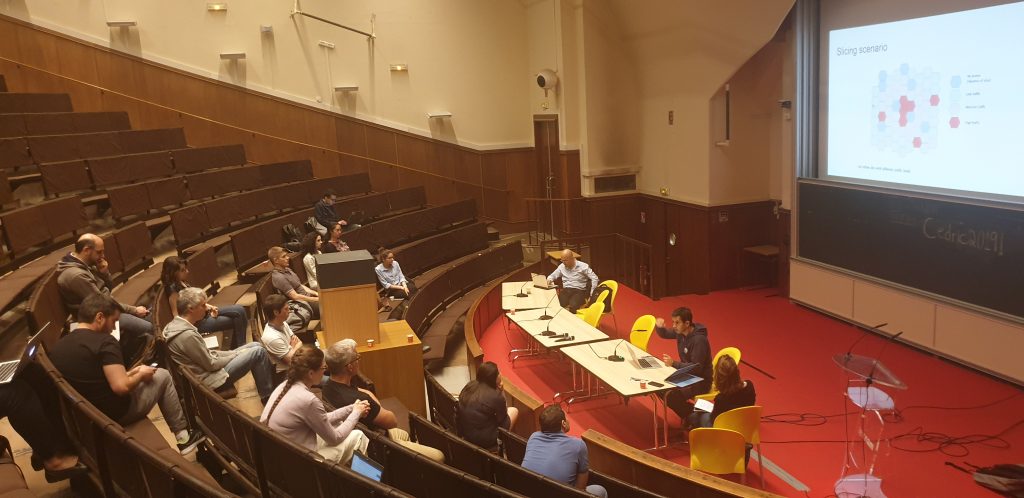
5G networks are expected to revolution our living environments, our cities and our industry by connecting everything. 5G design has thus to meet the requirements of two “new” mobile services: massive Machine-Type Communications (mMTC), and Ultra Reliable Low Latency Communications (URLLC). Slicing concept facilitates serving these services with very heterogeneous requirements on a unique infrastructure.
MAESTRO-5G project develops enablers for implementing and managing slices in the 5G radio access network, not only for the purpose of serving heterogeneous services, but also for dynamic sharing of infrastructure between operators. MAESTRO-5G develops a framework for resource allocation between slices and a business layer for multi-tenant slicing. It provides an orchestration framework based on Software Define Networking that manages resources and virtual functions for slices. A hardware demonstrator brings the slicing concept to reality and showcases the project’s innovations.
MAESTRO-5G is expected to deliver the following main results:
A resource allocation framework for slices, integrating heterogeneous QoS requirements and spanning on multiple resources including radio, backhauling/fronthauling and processing resources in the RAN.
A complete slice orchestration architecture including strategic provisioning and dynamic reoptimizations algorithms and their integration with NFV and SDN strata.
A business layer for slicing in 5G, enabling win-win situations between players from the telecommunications industry and the verticals, ensuring that the 5G services are commerciallyviable and gain acceptance in the market.
A demonstrator showing the practical feasibility as well as integration of the major functions and mechanisms proposed by the project, on a 5G Cloud RAN platform. The enhanced platform is expected to support the different 5G services (eMBB and IoT) and to demonstrate key aspects of slicing, such as:
Ability to create and operate in parallel multiple slices, on the same infrastructure and sharing the same radio (spectrum), network (link) and computing (service functions) resources, each having different service requirements.
Ability to create and operate in parallel and independently different slices, sharing the same infrastructure/spectrum, belonging to different business actors, such as different mobile access and virtualization infrastructure operators.
Demonstrate inter-slice control ensuring respect of SLAs and a fair resource sharing.

The project runs from Feb. 2019 to July 2022.
